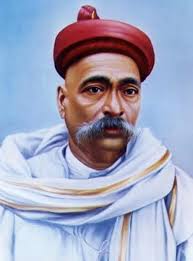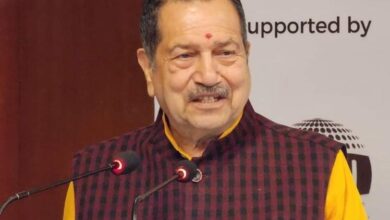Lokmanya Tilak Biography, Wikipedia, Family, Personal Life, Career, Net Worth
Lokmanya Tilak (1856–1920) was a prominent Indian nationalist, freedom fighter, social reformer, and educator. He played a key role in India’s struggle for independence from British rule and is often referred to as the “Father of Indian Unrest.”
Profile
| Aspect | Details |
|---|---|
| Full Name | Bal Gangadhar Tilak |
| Popular Title | Lokmanya Tilak (“Accepted by the people”) |
| Born | July 23, 1856, Ratnagiri, Maharashtra, British India |
| Died | August 1, 1920, in Bombay |
| Profession | Freedom fighter, journalist, teacher, lawyer, social reformer |
| Famous Slogan | “Swaraj is my birthright and I shall have it” |
| Political Role | Leader of the Indian National Congress (extremist faction) |
| Major Allies | Lala Lajpat Rai, Bipin Chandra Pal (“Lal-Bal-Pal” trio) |
| Key Movements | Indian independence movement, Home Rule Movement |
| Founded Newspapers | Kesari (Marathi), The Mahratta (English) |
| Founded Institutions | Deccan Education Society (1884) |
| Cultural Contributions | Popularized Ganesh Chaturthi and Shivaji Jayanti for national awakening |
| Major Imprisonment | 1908–1914: Jailed in Mandalay, Burma for sedition |
| Legacy | Regarded as the “Father of Indian Unrest” by the British |
Early Life and Family
Bal Gangadhar Tilak, fondly known as Lokmanya Tilak, was born on July 23, 1856, in Chikhalgaon, Dapoli Taluka, Ratnagiri District, Maharashtra, India, into a Marathi Hindu Chitpavan Brahmin family. His birth name was Keshav Gangadhar Tilak, but he was commonly called Bal. His father, Gangadhar Tilak, was a respected Sanskrit scholar and schoolteacher, and his mother, Parvatibai, managed the household. The family later moved to Pune in 1866 due to Gangadhar’s job transfer. Tragically, Tilak lost his mother when he was young and his father at age 16, leaving him under the care of his uncle, Govindrao.
In 1871, at the age of 15, Tilak married Tapibai Bal from Ladghar, Ratnagiri, who was later renamed Satyabhamabai after marriage. The couple had six children: Ramabai Vaidya, Parvatibai Kelkar, Vishwanath Balwant Tilak, Rambhau Balwant Tilak, Shridhar Balwant Tilak, and Ramabai Sane. Tilak’s family life was marked by personal losses, including the death of his wife during his imprisonment in Mandalay, which deeply affected him.

Lokmanya Tilak Education
Tilak was a brilliant student with a keen interest in mathematics, Sanskrit, and Indian culture. He began his schooling in 1861 under his father’s guidance, excelling in Sanskrit, grammar, literature, and arithmetic. He attended Poona High School for his English studies, where he faced challenges with teachers but persevered. In 1872, he cleared his matriculation and enrolled at Deccan College, Pune, earning a Bachelor of Arts in Mathematics with first-class honors in 1877. Initially pursuing an M.A., he switched to law and obtained an LL.B. from Government Law College, Bombay, in 1879.
Lokmanya Tilak Career
Tilak’s career spanned education, journalism, and political activism, all aimed at fostering Indian nationalism and self-rule (Swaraj). After graduating, he taught mathematics at a private school in Pune but left due to ideological differences. In 1880, inspired by Vishnushastri Chiplunkar, Tilak co-founded the New English School with Gopal Ganesh Agarkar and Mahadev Ballal Namjoshi to promote nationalist education. This led to the establishment of the Deccan Education Society in 1884 and Fergusson College in 1885, where Tilak taught mathematics and Sanskrit.
In 1881, Tilak launched two newspapers, Kesari (in Marathi) and Mahratta (in English), to awaken political consciousness and criticize British rule. His fiery editorials earned him the title “Father of Indian Unrest” from British authorities. He joined the Indian National Congress (INC) in 1890 but opposed its moderate stance, advocating radical measures for Swaraj. His famous slogan, “Swaraj is my birthright, and I shall have it,” became a rallying cry for the independence movement.
Tilak, along with Bipin Chandra Pal and Lala Lajpat Rai, formed the “Lal-Bal-Pal” triumvirate, leading the extremist faction of the INC. He supported the Swadeshi and Boycott movements post the 1905 Bengal Partition, promoting indigenous goods and passive resistance, strategies later adopted by Mahatma Gandhi. In 1916, he co-founded the All India Home Rule League with Annie Besant, mobilizing thousands for self-rule. Tilak’s efforts in the 1916 Lucknow Pact fostered Hindu-Muslim unity, a significant step toward national solidarity.
His outspoken writings led to multiple imprisonments, including a six-year term in Mandalay (1908–1914), where he wrote his seminal work, Shrimad Bhagvad Gita Rahasya, interpreting the Gita as a call to action. Despite health issues, including diabetes, and personal tragedies, Tilak remained steadfast until his death on August 1, 1920, in Bombay.
Lokmanya Tilak Contributions and Legacy
Tilak was a scholar, philosopher, and nationalist who reshaped India’s freedom struggle. He transformed Ganesh Chaturthi (1893) and Shiv Jayanti (1895) into public festivals to unite communities and foster national pride, though this sometimes alienated non-Hindus. His books, including The Arctic Home in the Vedas and Gita Rahasya, reflected his deep engagement with Indian philosophy and history. Mahatma Gandhi called him the “Maker of Modern India,” and Jawaharlal Nehru dubbed him the “Father of the Indian Revolution.” His legacy endures through institutions like Fergusson College, the continued publication of Kesari, and the annual Ganeshotsav celebrations.
Lokmanya Tilak Personal Life
Tilak’s personal life was intertwined with his public mission. He viewed religion and practical life as inseparable, famously stating, “The real spirit is to make the country your family instead of working only for your own.” Despite his conservative social views, particularly on women’s issues, he advocated for education and social reforms like banning child marriage. His health deteriorated due to diabetes and the rigors of imprisonment, and the loss of his wife during his Mandalay term added to his struggles. Yet, his resilience and dedication to Swaraj remained unwavering.
Lokmanya Tilak Net Worth
Historical records do not provide specific details about Tilak’s net worth, as his life was dedicated to public service rather than personal wealth accumulation. As a teacher, journalist, and activist, he lived modestly, investing his resources in educational institutions, newspapers, and the freedom movement. His wealth lay in his intellectual contributions and the mass following he inspired, earning him the title “Lokmanya” (accepted by the people).
READ ALSO: Ruth Chavarria Wikipedia, Biography, Age, Career, Family, and Net Worth 2024
FAQs
Who was Lokmanya Tilak?
Bal Gangadhar Tilak, known as Lokmanya Tilak, was an Indian nationalist, teacher, journalist, and independence activist who championed Swaraj (self-rule) and was a key figure in India’s freedom struggle.
What were Tilak’s contributions to education?
Tilak co-founded the New English School, Deccan Education Society, and Fergusson College to promote nationalist education and Indian culture.
Why was Tilak called the “Father of Indian Unrest”?
The British dubbed him so due to his fiery writings in Kesari and Mahratta, which incited nationalist sentiments against colonial rule.
What books did Tilak write?
He authored Shrimad Bhagvad Gita Rahasya, The Arctic Home in the Vedas, Orion, and Vedic Chronology, blending scholarship with nationalism.
How did Tilak contribute to Indian festivals?
He popularized public celebrations of Ganesh Chaturthi and Shiv Jayanti to unite people and foster national pride.
What was the Home Rule League?
Founded in 1916 with Annie Besant, it aimed to achieve self-rule, growing to 32,000 members and galvanizing the independence movement.
Why was Tilak imprisoned?
He faced multiple imprisonments, notably in Mandalay (1908–1914), for sedition due to his anti-British writings and speeches.
How did Tilak influence Gandhi?
Tilak’s ideas of Swaraj, Swadeshi, and passive resistance inspired Gandhi’s non-cooperation movement, with Gandhi calling him the “Maker of Modern India.”
When and how did Tilak die?
Tilak passed away on August 1, 1920, in Bombay due to deteriorating health from diabetes and the toll of his imprisonments and activism.



